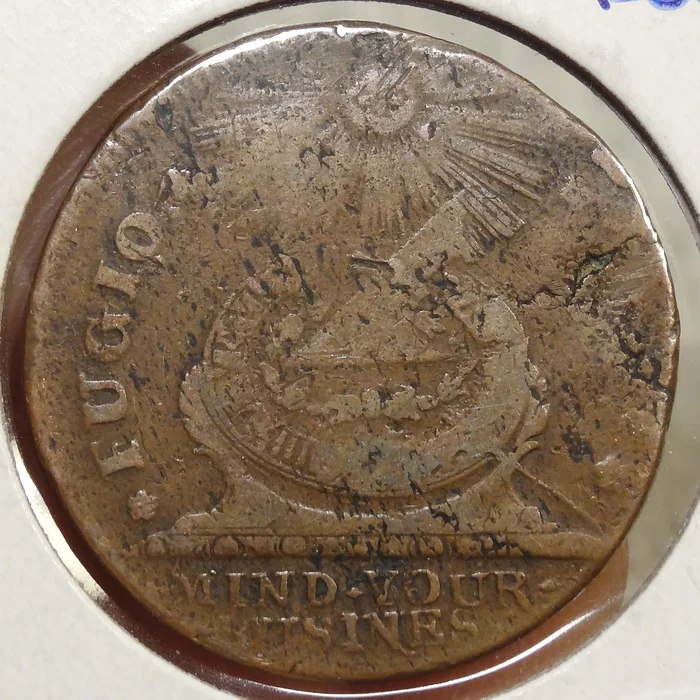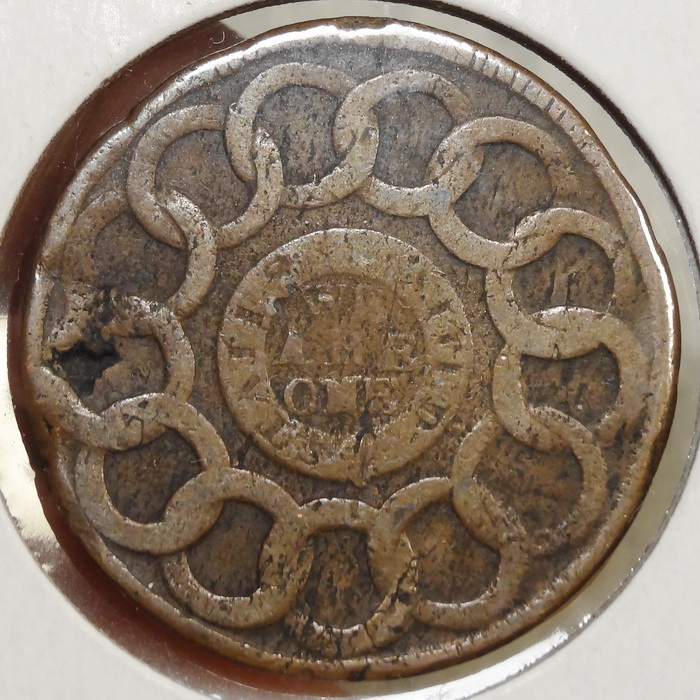1787 Fugio Cent, Very Good Details, Newman-15Y


1787 Fugio Cent, Very Good Details, Newman-15Y
An example of the earliest coin design issued by the authority of the new United States, struck under contract by one James Jarvis of New York. Specific facts and figures regarding this issue are scarce, having been lost, however a reasonable number must have been struck based upon the number of different dies used, at least one and a half dozen. When the country was established, the mood in Congress was to have our currency struck by private firms, to avoid the expense of establishing a Mint. The general failure of such efforts forced the issue, and the U. S. Mint was established in 1792, however Congress was extremely parsimonious with funds for a number of years, limiting early efforts. This coin shows an excellent example of some of the problems faced by the Mint’s contractors, as planchet stock (pure Copper) was scarce in this country, leading to many quality control issues. While the date is not visible due to planchet issues, this coin displays the details of a Very Good or better coin overall. The planchet has significant flaws likely due to the limitations of the rollers used to draw the strip, or the use of poorly recycled material, something common to many copies across all of the varieties. The large “hole” on the Reverse definitely appears to be a void caused by alloy problems - as well the coin shows the typical marks and light roughness in spots of a coin that took some hard use when the country had very little “cash money” in the economy. These coins are principally identified to major group by the presence or lack of the cinqfoils before and after FUGIO and the date, by the rings on the Reverse (plain or with the names of the individual colonies shown), and by whether in the center of the Reverse the ring shows “United States” or “States United”. This is a copy of the “Four Cinqfoils/Eight Pointed Stars”. The eight pointed stars that are the key identification point are not visible due to a combination of wear and bad planchet, but this variety can be identified by the recut “I” in “Business”, letter position and the obvious die crack at 4:00 on the Obverse. My guess is that the manufacture of this series was a process of experimentation with different dies, to see what combination would work. Pricing/valuing Colonials is fraught with difficulty due to the common “issues” with quality that affect appearance. This is priced at about the Net value of a Good, and should be a reasonable value for someone who is interested in a copy of our Nations early coinage.